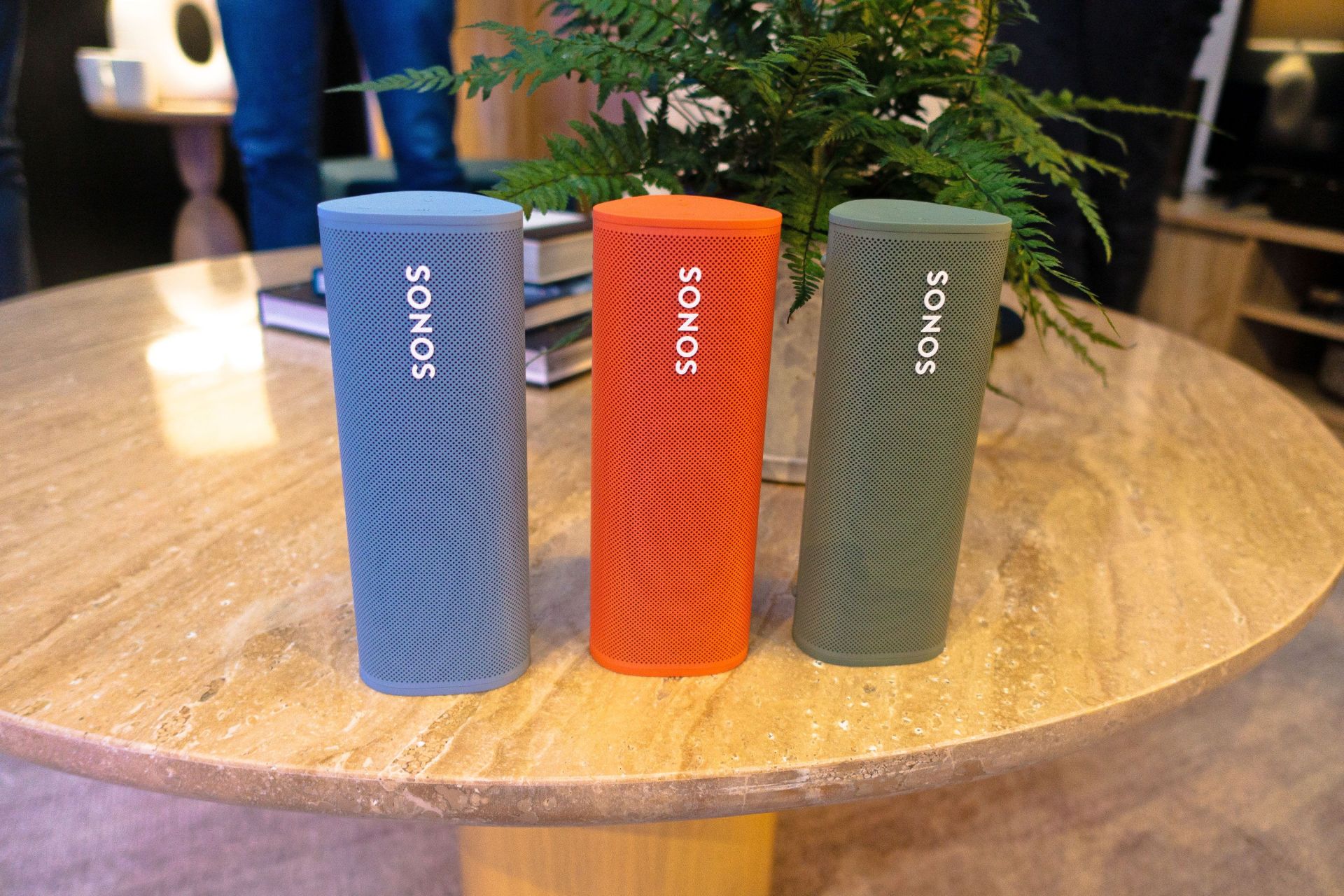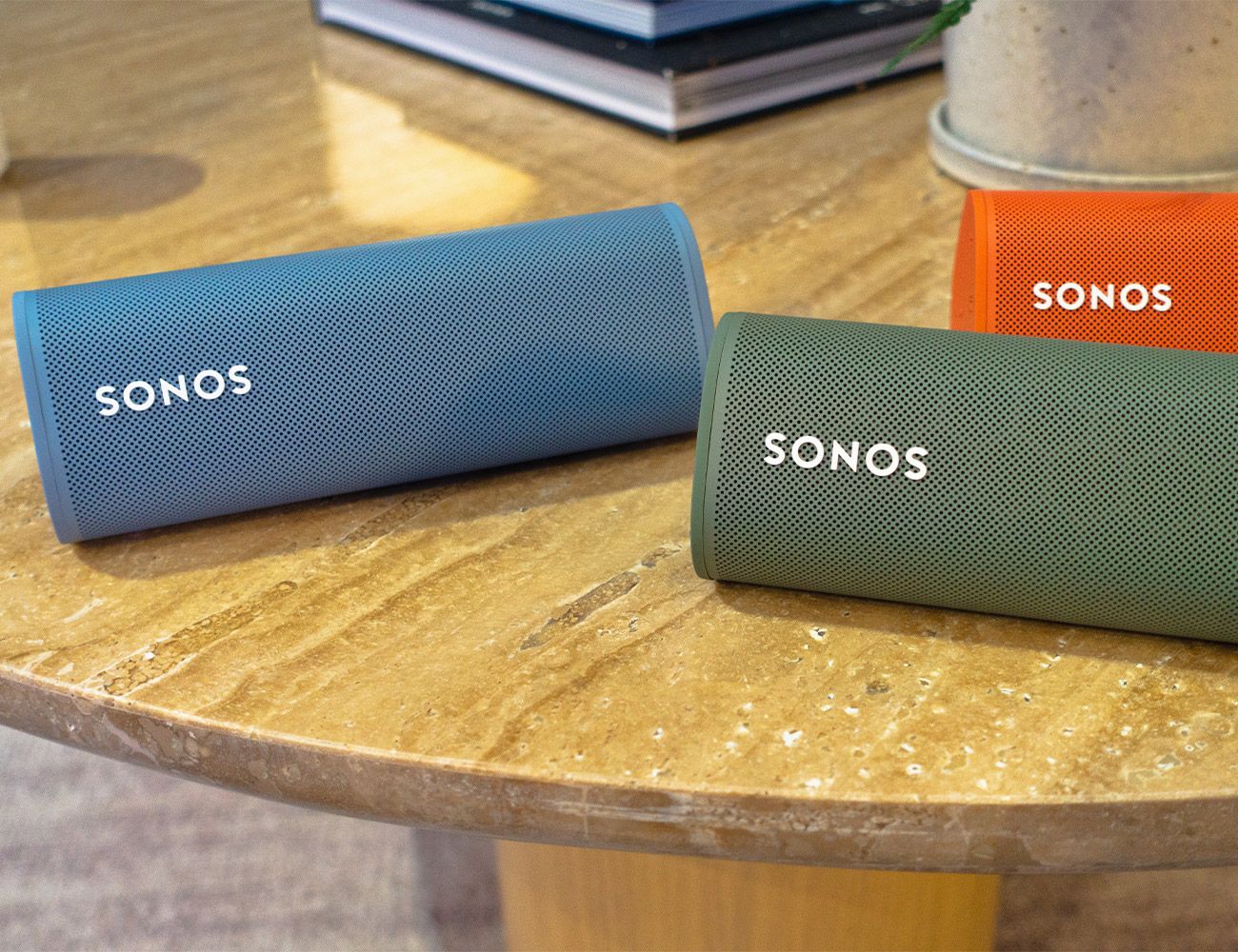Pictured: In addition to Sonos Voice Control, Sonos has released the Roam in three new colors: olive, wave (light blue) and sunset (orange). They are priced at $179 each.
Sonos has officially announced its first smart assistant, called Sonos Voice Control. The new tech will respond to “Hey Sonos” voice commands, and it will roll out to every voice-capable Sonos speaker — including the One, Move, Roam, Arc and Beam (2nd Gen) — as a free software update on June 1.
With Voice Control, Sonos is prioritizing privacy. Every “Hey Sonos” voice command will be processed entirely on the smart speaker. Nothing will be sent to the cloud and or stored anywhere, which differentiates it from pretty much every other smart assistant — Alexa, Siri, etc. — out there.
This means that Sonos Voice Control is designed to almost exclusively handle music requests. You can request a song, an artist, a playlist or a podcast and Sonos Voice Control will grab it from your default streaming service. It will not be able to answer queries about sports, the weather or other trivia-related things like Amazon’s Alexa or Google Assistant.

Sonos Voice Control will, however, be able to live alongside Alexa or Google Assistant in the same speaker, so you don’t have to decide on one voice assistant that you want to have. For example, you’ll be able to give your Sonos One voice commands voice “Hey Sonos” and “Alexa” (or “Hey Google”) and it will respond to either.

